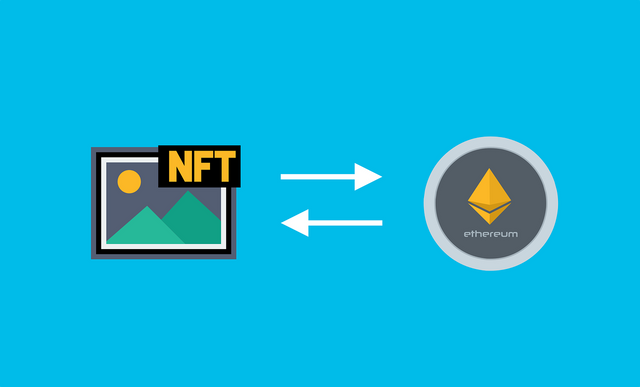
Non-fungible tokens (NFTs) are digital assets that represent unique items such as collectible figurines or digital game items. These tokens are called non-fungible because they don’t have any value as a medium of trade. They represent the underlying asset or virtual good. These tokens are important because of their potential to disrupt the $200 billion gaming industry and the many industries that crypto will disrupt in the future.
Non-fungible tokens are also known as non-federated or non-federated blockchain assets. They are different from standard blockchains in that the tokens don’t represent the same thing. Rather than being based on a shared, public record of a transaction, NFTs are based on a shared record of the token itself. They are a way of recording ownership of digital assets that aren’t fungible and aren’t interchangeable. The digital asset itself is unique and cannot be replaced. To understand what a non-fungible token is, we’ll need to explore the history of digital tokens.
That’s not just a hypothetical example; many of the first virtual currencies were non-fungible tokens. In fact, the first virtual currency, called “bitcoin,” was a non-fungible token. The world’s first non-fungible token was called “ether” and was created by a developer named.
What is a Fungible Token?
Fungible tokens, also known as fungible assets, are interchangeable. They have value, but they can also be replaced. Coins like Bitcoin and Litecoin are fungible. They can be sent from one person to another person because they are the same asset. These can be traded, bought and sold, and exchanged.
Fungible assets have value because people are willing to exchange them. People should be able to exchange something because it should have value. It should have value because it is useful and there should be demand for it. The fact that people are willing to exchange something is the condition under which the value exists. If it’s not necessary to have something in order to have a desire to have it, then it’s not really valuable. You can’t really say it’s valuable.
Check out my blog: https://tinyurl.com/3sf7raer
How Do Fungible Tokens Work?
Fungible tokens are based on a shared record of a single asset. This asset can be a collectible token like a figurine or a digital asset like a game item. On the record, each asset has its own unique identifier. A collectible like a beer mug can have a lot of different attributes and the identifier for that mug will be a combination of those attributes. When a user of the platform wants to trade one item for another, they don’t trade the collectibles. They trade the identifiers. If Emily is trading a beer mug, she is not giving the beer mug to someone else. She is giving the identifier of the beer mug to someone else.
The platform records this as a trade between the two users. When the user who receives the mug is done with it, they could destroy the record of the transaction. This means that the mug’s identifier will be removed from the shared database and no one would be able to trace back to that record and know that the mug had ever been traded.
The History of Fungible Tokens
The first virtual currency in the world was actually a non-fungible token. The developers of “Ether” created the token in 2014. “Ether” was the first non-fungible token and it was created by Vitalik Buterin. Ethereum is an application that uses the “Ether” token.
Buterin saw that there were many uses for tokens that were not interchangeable. He saw the potential for tokens that represented real-world assets. He also saw that these assets could be represented as virtual commodities and traded in the same way as traditional commodities like oil or gold.
He also saw that these tokens could be used in more than just trading. They could represent items like collectibles or digital items that people wanted to own. They could represent ownership of businesses. And they could represent ownership of property as well.
Non-Fungible Tokens

A collectible token, like a figurine or an in-game item like a sword, should be pretty obvious. It’s a token for a physical item like a sword. An item like this doesn’t have an underlying asset. The item itself is the asset. These are probably the most straightforward tokens that exist.
Non-fungible tokens are a bit more complicated. They are tokens that have no underlying asset. Rather, they represent a unique item. An example of this is a token that represents a unique painting. It’s a token that represents a unique painting, but there is no painting.
These tokens are important because they can represent unique items. They are different from collectibles such as figurines or paintings in that they cannot be replicated easily. They are more similar to a credit card or a token that represents a unique physical good. Because there is no underlying asset, there is no guarantee that someone will buy the token and there is no guarantee that the token will represent a real item.
Check out my blog: https://tinyurl.com/3sf7raer
How Can Non-Fungible Tokens Disrupt Industries?
A collectible token that represents a physical good like a figurine or a painting could be sold for Bitcoin. The token could then be traded for other collectible items. If the value of the collectible increases in popularity, it could be traded for more valuable items. And if demand for the collectible decreases, the token could be traded for other collectible items. This is called “dual-use.” A collectible token that represents a physical good could be used like this to disrupt the collectible industry. It could also be used to disrupt industries such as travel and tourism where people collect unique items like art or souvenirs.
Conclusion
Non-fungible tokens are an exciting way to represent unique items. These tokens can be traded for other items such as physical collectibles or travel experiences. These tokens could also be used to disrupt industries as well.
NFTs are also known as non-federated or non-federated blockchain assets. They are different from standard blockchains in that the tokens don’t represent the same thing. Rather than being based on a shared, public record of a transaction, NFTs are based on a shared record of the token itself. They are a way of recording ownership of digital assets that aren’t fungible and aren’t interchangeable. The digital asset itself is unique and cannot be replaced. To understand what a non-fungible token is, we’ll need to explore the history of digital tokens. That’s not just a hypothetical example; many of the first virtual currencies were non-fungible tokens. In fact, the first virtual currency, called “bitcoin,” was a non-fungible token. The world’s first non-fungible token was called “ether” and was created by a developer named Ethereum.